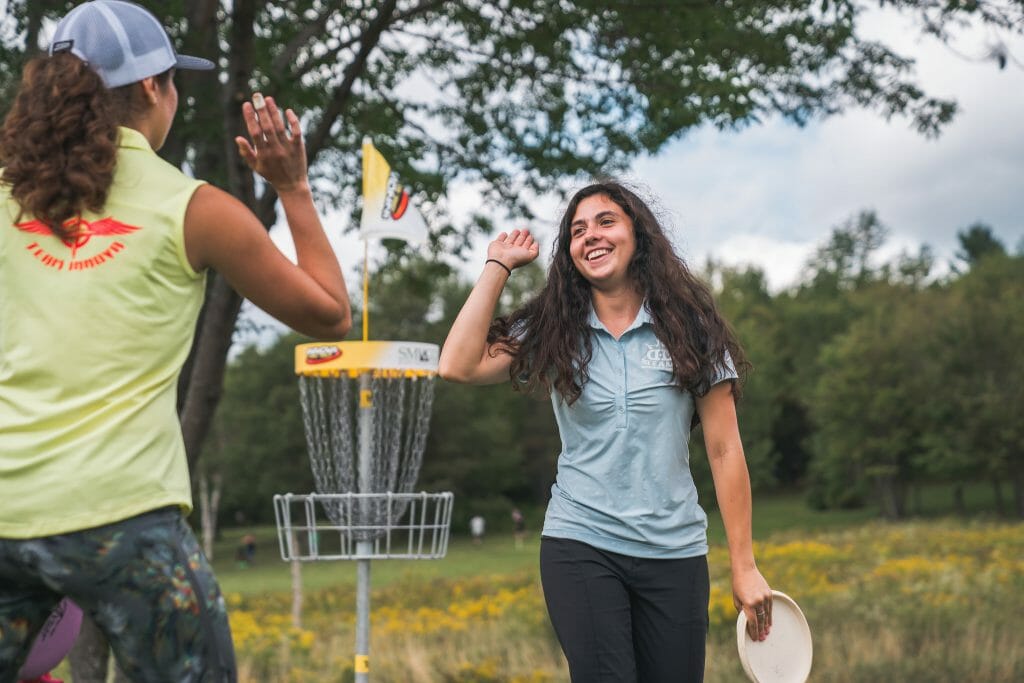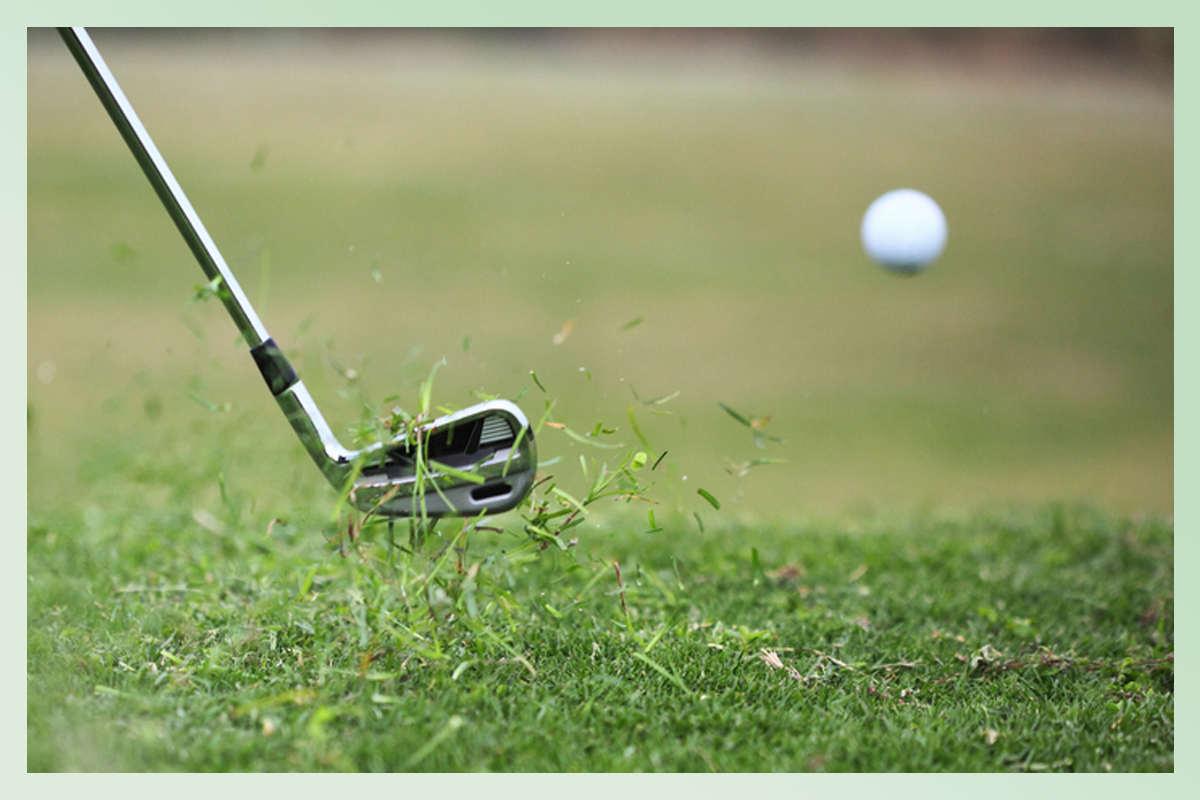What the Pros Know: Understanding Birdies in Disc Golf
In disc golf, a birdie is a score of one stroke under par for a hole. Basically, it means you completed the hole in fewer throws than the number of throws an expert player would need to complete the hole.
Birdies are a desirable outcome for players as they help to lower their scores and improve their chances of winning the game. Disc golf is an exhilarating game that requires skill and precision. Similar to traditional golf, it involves throwing a flying disc or frisbee at a target or a series of targets in as few throws as possible.
With its growing popularity, disc golf has become a highly competitive sport with players striving to improve their skills and techniques. Understanding the rules and jargon of disc golf, such as birdies, is critical for players looking to become serious contenders in the game.

Credit: discgolf.ultiworld.com
The Basics Of Disc Golf
Disc golf is a thrilling and fast-paced sport that’s been gaining popularity over the years. The game consists of throwing a specialized frisbee into a basket in as few throws as possible.
What Is Disc Golf?
Disc golf is a sport that’s played much like traditional golf, only using frisbees instead of golf balls and clubs. The player must throw the frisbee in the direction of each basket and land it in as few throws as possible.
Courses can range from short nine-hole loops to complete 18-hole courses stretching across the length of parks or forests.
Why Is Disc Golf Growing In Popularity?
Disc golf has gained popularity over the years due to several reasons, including:
- Affordability: Unlike golfing, which can cost hundreds of dollars in equipment and greens fees, disc golf requires minimal equipment, including a few frisbees and a designated course.
- Accessibility: Disc golf courses can be set up in public parks, enabling anyone to play and enjoy the sport.
- Environmental impact: Unlike traditional golf courses, disc golf courses don’t require hefty maintenance operations, making them eco-friendlier and sustainable.
- Community involvement: Disc golf courses are community-driven and often rely on volunteer efforts for maintenance, reflecting the sport’s inclusive, social, and grassroots values.
Understanding The Different Discs And Their Uses
Disc golfers use various frisbees designed to fit specific throwing techniques and distances. These discs come in various shapes to help players achieve maximum speed and distance requirements. The crucial types of discs include:
- Drivers: These are long-distance frisbees that fly faster and farther, making them perfect for long drives.
- Mid-range discs: These frisbees are designed for shorter throws, ideally between 100 to 250 feet. They are perfect for approaching the basket.
- Putters: These frisbees are designed for short-putts and aim to land inside the basket.
Disc golf is an exciting and affordable sport that’s gaining popularity around the world. It’s an inclusive sport that anyone can play, regardless of age or skill level. By understanding the different frisbee designs and techniques, players can enjoy the sport’s full potential.
The Scoring System In Disc Golf
Disc golf is a fun outdoor game that is growing in popularity worldwide. The objective of disc golf is to throw a disc into a designated target area known as a “hole. ” Similar to traditional golf, disc golfers aim to complete each hole with as few throws as possible.
In disc golf, players use a variety of discs for each unique situation, distance, and wind condition. It’s essential to know the scoring system when playing disc golf. In this blog post, we’ll explain what is a birdie in disc golf, what is a par, and how the points are calculated in disc golf.
What Is A Birdie?
A birdie is a term used in disc golf when a player completes a hole with one throw less than the par. For example, if the par is three, and the player completes the hole with two throws, then it is called a birdie.
A birdie is an excellent achievement and is often accompanied by a sense of accomplishment and excitement. It’s not easy to achieve a birdie, and it requires accuracy, precision, and a bit of luck.
Here are some additional points to remember:
- A “birdie” is indicated on the scorecard as -1.
- Players often celebrate birdies with high-fives, clapping, and cheers.
- Some players aim for birdies on every hole to increase their chances of winning.
What Is A Par?
Par is the number of throws a player needs to complete a course or a hole successfully. The number of required throws varies based on the distance, terrain, and obstacles present on the hole. In disc golf, par scores are typically three, four, or five.
If a player completes a hole in the same number of throws as the par, then it is called a par.
Here are some additional things to keep in mind:
- The “par” is indicated on the scorecard as 0.
- Completing a hole with a par is a good accomplishment, but not as exciting as a birdie.
- Players can aim for a par on every hole, but some challenging holes might have a higher par score.
How Are Points Calculated In Disc Golf?
Points in disc golf are calculated based on the number of throws a player takes to complete a course. The player with the lowest number of throws at the end of the round wins. In case of a tie, a sudden-death playoff takes place to determine the winner.
Here are some additional details:
- Points are scored on each hole based on how many throws a player has taken compared to the par.
- A birdie is worth -1 point, par is worth 0, and a bogey is worth +1 point.
- The final scorecard will show the total number of points, the number of birdies, pars, and bogeys on each hole.
Disc golf is a fun and exciting game that requires accuracy, precision, and strategy. Knowing the scoring system is essential to play and enjoy the game. A birdie is an excellent achievement, and completing a hole in par is good too.
The point system is straightforward, and players aim to achieve the lowest score at the end of the round. Keep these points in mind for your next disc golf game, and let the fun begin!
Strategies For Achieving Birdies
Disc golf is an exciting and challenging sport that requires skill, focus, and strategy. Achieving a birdie, which is scoring one under the par, is a golfer’s ultimate goal. It requires advanced techniques and a clear understanding of the course layout.
In this blog post, we will focus on the strategies for achieving birdies.
How To Evaluate The Course And Make A Plan
Before starting your game, it is crucial to evaluate the course and make a plan. This will help you determine the areas where you need to focus and where you can take chances. Here are some essential factors that you should consider while planning:
- Study the course map and understand the terrain, obstacles, and fairways. This will help you visualize your shots and choose the right disc.
- Observe the wind direction and speed, which can affect the disc’s flight path. Plan your shots accordingly.
- Take note of the distances of each hole, and assess how feasible it is to get a birdie.
- Consider the placement of the basket and plan your approach shots accordingly.
Making a detailed plan can save you precious strokes during the game and help you achieve birdies.
Identifying Potential Birdie Opportunities
Some holes on the course are more conducive to birdies than others. Identifying these potential birdie opportunities can help you adjust your game plan and get closer to your goal. The following are some factors to consider while identifying birdie opportunities:
- Shorter holes with fewer obstacles are ideal for birdies. These holes typically require less power and more accuracy.
- Holes with well-designed fairways encourage birdies. If you can hit the fairway accurately, you have a better chance of getting close to the basket.
- If the basket placement is near the front of the green or in an open area, it may be easier to get a birdie.
Keep an eye out for these potential birdie opportunities and plan your shots accordingly.
Tips For Improving Your Putting Game
Putting is a crucial aspect of disc golf. It is also an area where many golfers struggle to get birdies. The following tips can help improve your putting game and increase your chances of birdies:
- Practice regularly to develop your aim and distance control. This will give you the confidence to make putts under pressure.
- Use a putting stance that feels comfortable and natural. Your stance should be stable, balanced, and relaxed.
- Use the correct grip, and aim for the center of the basket. You can use a putting marker to aim accurately.
- Take your time while putting and focus on your technique. Rushing your shots can lead to missed putts.
These tips can help you improve your putting game and maximize your birdie opportunities.
Disc golf is a sport that requires patience, skill, and strategic planning. With the right approach, you can achieve birdies and take your game to the next level. Remember to evaluate the course, identify potential birdie opportunities, and work on your putting game.
Happy disc golfing!
Advanced Techniques For Consistent Birdies
Disc golf is a game that not only requires physical skill but also a strong mental game to excel. One of the most crucial elements in disc golf is achieving a birdie, which involves throwing the disc into the hole in one stroke below par.
In this blog post, we will explore advanced techniques for consistent birdies.
Role Of Wind In Disc Golf And How To Adjust Your Throw Accordingly
The wind is one of the most unpredictable factors while playing disc golf. It can greatly affect the trajectory of your throw, causing you to miss your mark. Here are some tips to help you adjust your throw according to the wind conditions:
- Check the direction of the wind before you throw and anticipate its effect on the disc’s flight path.
- Adjust your aim by aiming to the opposite side of the wind’s direction to give the disc enough room to work with.
- Use a more stable disc for headwinds, and a less stable disc for tailwinds.
- Throw with more hyzer angle for headwinds, and less hyzer angle for tailwinds.
Different Throwing Styles And Their Impact On Accuracy And Distance
The way a disc is thrown can greatly impact its accuracy and distance. Here are some of the throwing styles used in disc golf and their impact:
- Backhand: This is the most common throwing style used in disc golf. It involves throwing the disc with your dominant hand towards the target. It provides good accuracy and distance, and it can be modified for different types of shots.
- Forehand: It involves throwing the disc with your non-dominant hand towards the target. This throwing style can produce less distance than backhand but provides greater accuracy and precision.
- Overhand: This throwing style, also known as a tomahawk or hammer throw, involves holding the disc over your head and throwing it towards the target. It produces great accuracy and control for short-range shots.
Importance Of Mental Strength In Disc Golf
Disc golf requires a strong mental focus and discipline to remain calm and composed throughout the game. Here are some tips to help you develop your mental strength:
- Focus on the present moment and avoid dwelling on past mistakes.
- Develop a pre-shot routine to focus your mind before throwing your disc.
- Use visualization techniques to picture your ideal shot and envision a successful result.
- Practice breathing exercises to stay calm and composed during high-pressure situations.
Achieving consistent birdies in disc golf requires not only a strong physical game but also a resilient mental game. By mastering the techniques mentioned above, you can significantly improve your chances of achieving your target score.
Common Mistakes To Avoid When Trying To Achieve Birdies
Disc golf is a sport that’s quickly gaining popularity. The game is similar to traditional golf, but instead of using golf clubs and a small white ball, players use specially designed disc golf discs. The objective of the game is to throw the disc from the tee pad to the basket in as few throws as possible.
Achieving a birdie in disc golf is the equivalent of achieving a score of one under par in traditional golf. In this post, we will discuss some common mistakes to avoid when trying to achieve birdies.
Overconfidence And Taking Risks That Don’T Pay Off
Overconfidence can be both a blessing and a curse in disc golf. While a certain level of confidence is necessary to compete at a high level, it’s important not to get too cocky. Taking unnecessary risks for the chance of achieving a birdie can often lead to a higher score.
Here are some key points to keep in mind:
- Avoid making risky shots that have a low probability of success.
- Evaluate the terrain and adjust your strategy accordingly.
- Know your limitations and don’t try to make shots that are outside of your skill level.
Overcompensating For Wind Or Other Factors And Losing Focus On The Fundamentals
Disc golf is an outdoor sport, which means there are many environmental factors that can impact your game. Wind is one of the most significant factors that can affect your throws. Overcompensating for the wind can often lead to mistakes that cost you points.
Here are some key points to keep in mind:
- Practice throwing in different wind conditions to get a feel for how the wind will impact your throws.
- Focus on the fundamentals of your throw and don’t overcompensate for the wind.
- Adjust your aim to compensate for the wind, but don’t let it distract you from your game.
Letting Your Emotions Get In The Way Of The Game
Disc golf can be an emotionally charged game, and it’s easy to get caught up in the heat of the moment. However, letting your emotions get the best of you can often lead to mistakes that cost you points. Here are some key points to keep in mind:
- Stay calm and focused, even when things aren’t going your way.
- Take deep breaths and center yourself before each throw.
- Don’t let a bad shot or a bad break affect your overall game.
Achieving a birdie in disc golf requires skill, strategy, and focus. By avoiding these common mistakes, you’ll be well on your way to achieving that coveted score of one under par. Keep practicing, stay focused, and most importantly, have fun!
Frequently Asked Questions On What Is A Birdie In Disc Golf
What Is A Birdie In Disc Golf?
A birdie is a score of one under par on a hole. This means that the player completed the hole in one stroke fewer than the target score.
How Is A Birdie Different From An Eagle?
A birdie is one stroke under par, while an eagle is two strokes under par. This means that an eagle is a more difficult achievement than a birdie.
How Common Are Birdies In Disc Golf?
The frequency of birdies varies depending on the skill level of the player and the difficulty of the course. Experienced players typically achieve more birdies than beginners.
Conclusion
Disc golf is a sport that requires technique, precision, and strategy. A birdie is one of the most sought after scores in the game of disc golf. It’s achieved when a player completes the hole one stroke under par. Many factors such as wind, terrain, and distance can affect the shot’s outcome.
Therefore, players need to choose the right type of disc and plan their throws before executing them. Being able to score a birdie requires patience, practice, and dedication. It’s a symbol of excellence in the sport and a proud achievement for any disc golfer.
Whether you’re a professional or just starting, understanding the concept of a birdie is vital in the game. By keeping in mind the particulars of a birdie, you can increase your chances of getting an excellent score and enjoy the game even more.



